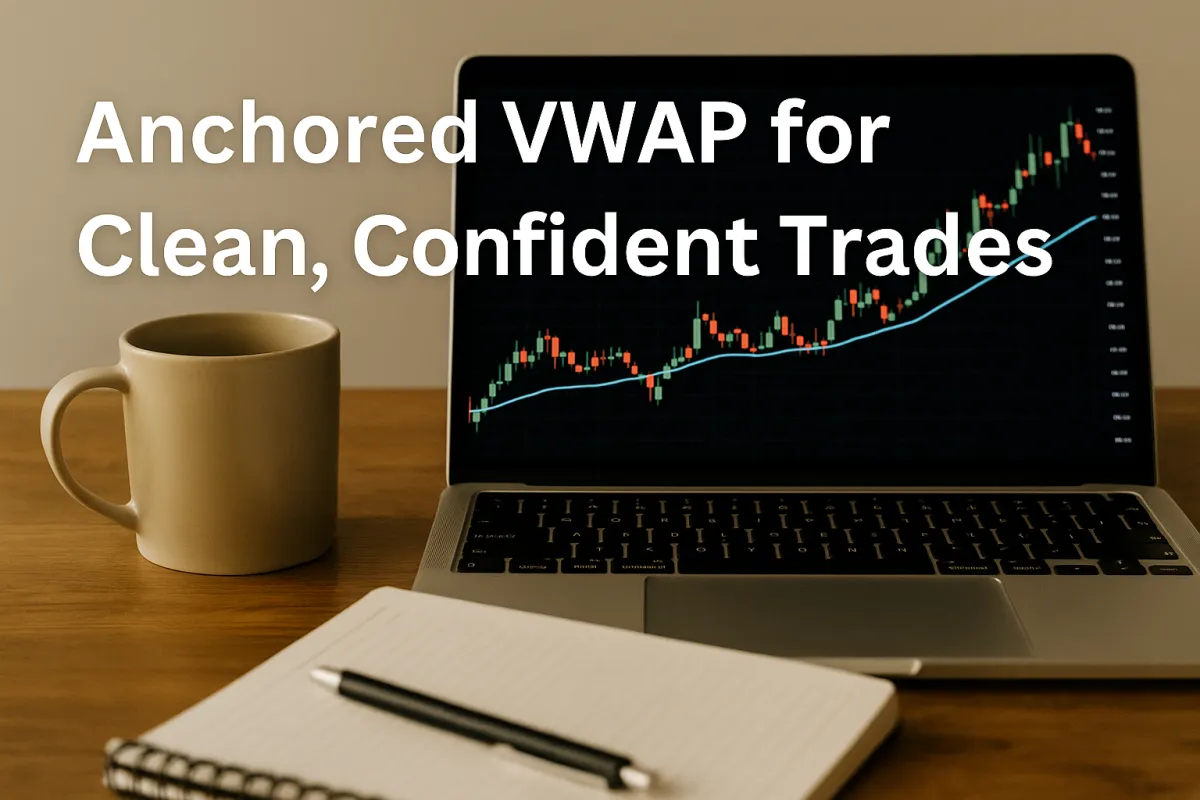Let’s Talk About What’s Possible
This program is for a select group of ministry leaders who are serious about building consistent income and long-term wealth through strategic trading. I work with those ready to create financial margin and multiply their income without guessing or gambling.
If you’re curious whether this could work for you, book a quick call. We’ll talk through your goals, and if it’s a fit, I’ll show you how it works.
Read Our Latest Blogs
Lorem ipsum dolor sit amet, consectetur adipiscing elit.

How I Use Anchored VWAP to Find Key Levels
So many traders load their screens with a dozen indicators, turning their charts into something that looks like the cockpit of a fighter jet. I used to be the same way. Now, I prefer to keep things simple. I want one easy-to-use line that gives me a real edge without all the clutter. For me, that is Anchored VWAP. For me, that edge is Anchored VWAP. Most people ignore it, or just plot the default version and move on. But Anchored VWAP has changed the way I find high-probability trade zones, time my entries, and control my exits. It has become one of my secret weapons, and today, I’ll show you exactly how I use it in my trading.
What Is Anchored VWAP (And Why Does It Matter)?
Anchored VWAP stands for Anchored Volume-Weighted Average Price. Unlike the regular VWAP, which always starts at the session open, Anchored VWAP lets you pick any point on the chart to “anchor” your average price. This single change makes it a powerful tool. You are not just looking at the average price for today, you are tracking the average price paid by everyone since a key event, like earnings, a major high or low, or a trend reversal.
Why does this matter? Because big money cares about their average price. Institutions, funds, and serious traders all watch these levels. When price retests an Anchored VWAP, you can see real, repeatable reactions.
Where I Anchor VWAP: The Three Key Events
The power of Anchored VWAP is all about where you drop the anchor. Here’s how I do it:
Major Swing Highs and LowsAfter a big move up or down, I anchor VWAP to the most recent swing high or swing low. This tells me the average price paid since that move. These levels often become magnets or turning points.
Earnings AnnouncementsI anchor VWAP to the day of a company’s earnings release. This captures the average price since new information entered the market, making it perfect for trading post-earnings moves.
Step-By-Step: How I Use Anchored VWAP in My Trading
Let’s get practical. Here’s my routine, start to finish:
Identify the Key Event. Before I add an Anchored VWAP, I look for the last major turning point, news event, or breakout. This becomes my anchor.
Plot Anchored VWAP On TradingView. Use the Anchored VWAP tool and drop it at the exact bar of the key event.
Watch Price Interactions. Now, every time price approaches the Anchored VWAP, I pay close attention. Is it finding support? Is it failing at resistance? Does volume pick up at these levels?
Plan Entries and Exits. If price is bouncing off an Anchored VWAP, I look for an entry with a tight stop just below the VWAP. If price is rejecting the level, I may use it as an exit or even a reversal setup.
Combine with Other Tools. Anchored VWAP is not magic by itself. I use it alongside basic support and resistance, and my seasonal research to build confidence in every trade.
Real Example
(Not financial advice)
Let’s say I’m trading NKE after a strong earnings report. On the trading day of the report, I anchor VWAP to the earnings bar. Over the next few sessions, price pulls back below that anchored VWAP, but then we see it turn around and a few days later price closes above the VWAP. That is my entry. My stop is just below the recent low. My target is set based on prior resistance.
Sometimes, the anchored VWAP will act as a “ceiling” after a failed move, which can signal a short setup or an exit. What matters is that I know exactly why I’m entering, and exactly where my risk lives.

In this example, following this strategy, you bought at $97.14 on Oct 6th, and sold at $107 on Nov 3rd. That's more than a 10% ROI in about a month!
Common Mistakes and How to Avoid Them
Anchoring to the Wrong Bar: If you pick a random candle, your VWAP is meaningless. Always anchor to a true event, like major high/low, earnings, breakout, or key reversal.
Ignoring Volume: VWAP is a volume-weighted tool. If there is no real volume at your level, the reaction is less likely to hold.
Relying Only on VWAP: Just because price touches the VWAP, doesn't mean we take a trade. Always use confirmation.
Not Adjusting for Timeframe: Short-term trades need short-term anchors. Long-term trades need long-term anchors. Don't anchor to a quarterly earnings report and then expect the trade to work out for you within a day.
Actionable Takeaways
Review your last five trades: Could an anchored VWAP have improved your entry or exit?
On your next watchlist scan, plot Anchored VWAPs on two or three stocks and watch how price reacts.
Add “anchor the VWAP” to your trading checklist every time you see earnings, new highs/lows, or major breakouts.
Next Steps
Anchored VWAP is not just a “pro tool,” it is one of the simplest ways to see where the real battle between buyers and sellers is happening. If you want cleaner entries, tighter risk, and more confidence in your trades, start using it today.
If you want my complete course on how to trade stocks this way, comment below or send me a message. Let’s raise your edge together, one anchored level at a time.
**Content shared by Stocks for Pastors is for informational purposes only and is not financial or investment advice. Past performance does not guarantee future results. Before making any investment decisions discuss your personal situation with qualified financial, tax, or legal professionals. Stocks for Pastors and its contributors may hold positions in the securities discussed but are under no obligation to update or disclose changes.



